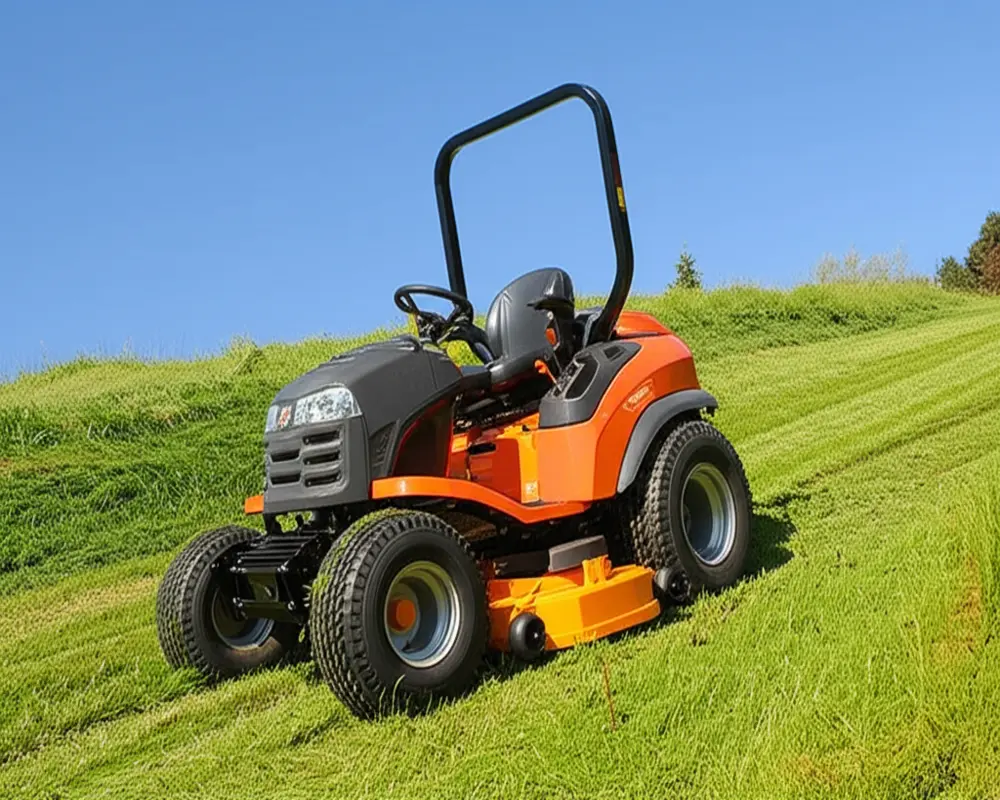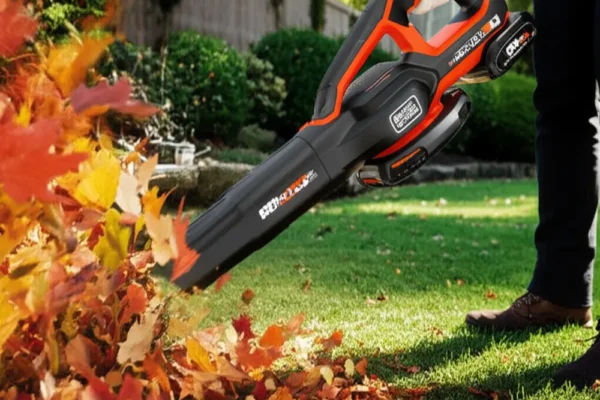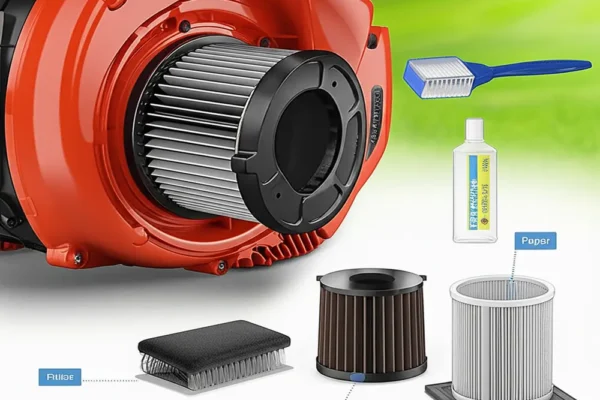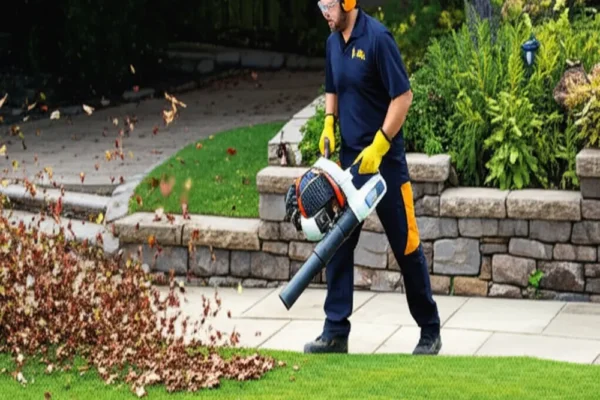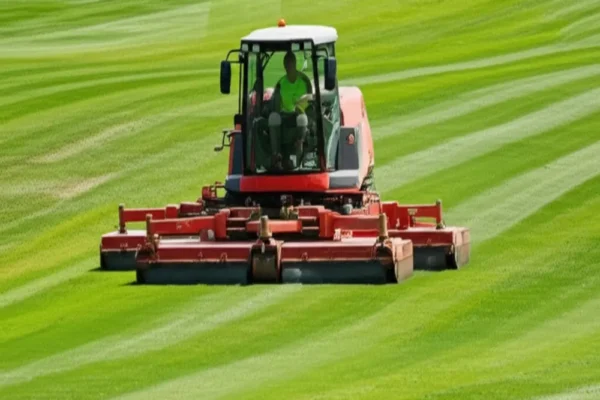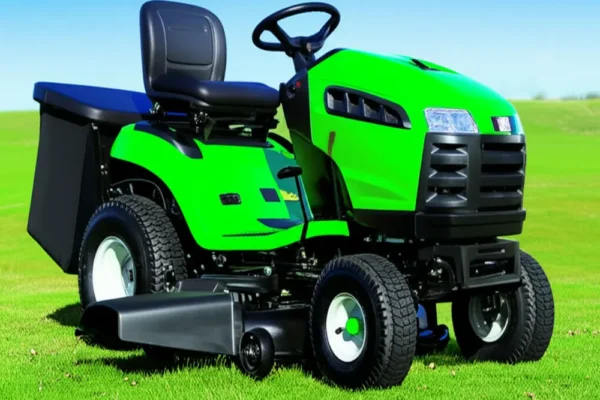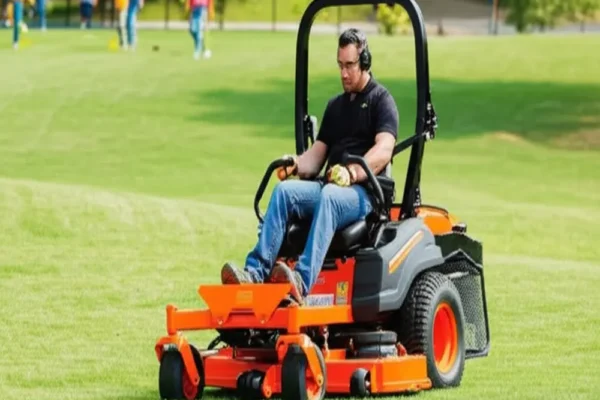The Ultimate Guide: Best Lawn Mowers for Steep Hills & Slopes (Safety & Performance)
Mowing steep hills presents unique challenges and hazards that demand more than just a standard lawn mower. Achieving a well-manicured hillside requires the right equipment combined with a clear understanding of safety practices. The lawn mower for steep hills you choose can make all the difference between an efficient mowing session and a risky endeavor. This comprehensive guide dives into what defines a steep slope for mowing, the essential mower features, and safety guidelines to help you conquer your hilly terrain safely and effectively in 2025.
Understanding “Steep”: Defining Hill Grades for Mowing Safety
Contents
- 1 Understanding “Steep”: Defining Hill Grades for Mowing Safety
- 2 Essential Features: What Makes a Lawn Mower Great for Steep Hills
- 3 Types of Lawn Mowers Best Suited for Steep Hills
- 4 Top Recommended Lawn Mowers for Steep Hills in 2025
- 5 Crucial Safety Guidelines for Mowing on Slopes
- 6 Choosing the Right Mower for YOUR Specific Hill: A Decision-Making Guide
- 7 Maintenance Tips for Mowers Used on Hilly Terrain
- 8 When to Consider Professional Lawn Care Services for Extreme Slopes
- 9 Conclusion: Mow Safely, Mow Smartly
- 10 Frequently Asked Questions (FAQs)
- 10.1 Can a regular riding mower be used on steep hills?
- 10.2 What is the maximum incline for self-propelled mowers?
- 10.3 Are zero-turn mowers suitable for slopes?
- 10.4 How to measure hill grade?
- 10.5 Is pushing uphill or pulling uphill safer for walk-behind mowers?
- 10.6 What safety gear is recommended for mowing on slopes?
Before selecting a mower or setting foot on your slope, it is crucial to understand your hill’s incline and its classification. Hills are commonly measured by their grade, which indicates the slope’s steepness. This can be expressed in degrees or as a percentage grade. For instance, a 15-degree slope roughly equates to a 27% grade. Knowing this number is essential because it determines the feasibility and safety of mowing.
Lawn mower manufacturers often provide safe maximum incline ratings for their models. For example, many self-propelled walk-behind mowers are safe up to about 15 degrees (27%), whereas specialized all-wheel drive or riding mowers can handle slopes up to 20 degrees (about 36%). Exceeding these limits can increase the risk of tipping or loss of control, endangering the operator.
Essential Features: What Makes a Lawn Mower Great for Steep Hills
The construction and engineering of a lawn mower for steep hills focus on several critical aspects to ensure performance and safety:
- Drive Systems: Models with All-Wheel Drive (AWD) offer superior traction on uneven ground, making them excellent for slopes where stability matters. Rear-Wheel Drive (RWD) self-propelled mowers provide good balance between maneuverability and power, while hydrostatic transmissions offer smooth control essential on hills.
- Engine Power & Torque: Uphill mowing requires higher torque to maintain consistent speed without straining the engine.
- Low Center of Gravity: A mower designed with a low center of gravity minimizes tipping risks by maintaining closer contact to the ground.
- Tires & Traction: Wide tires with aggressive treads improve grip. Proper tire pressure also plays a key role in maintaining stability.
- Braking Systems: Reliable brakes help control speed, especially on descents.
- Deck Design & Durability: Heavy-duty decks withstand the stress from uneven terrain and brush contact.
- Operator Ergonomics & Controls: Comfort and intuitive controls enable the operator to focus on steering and stability.
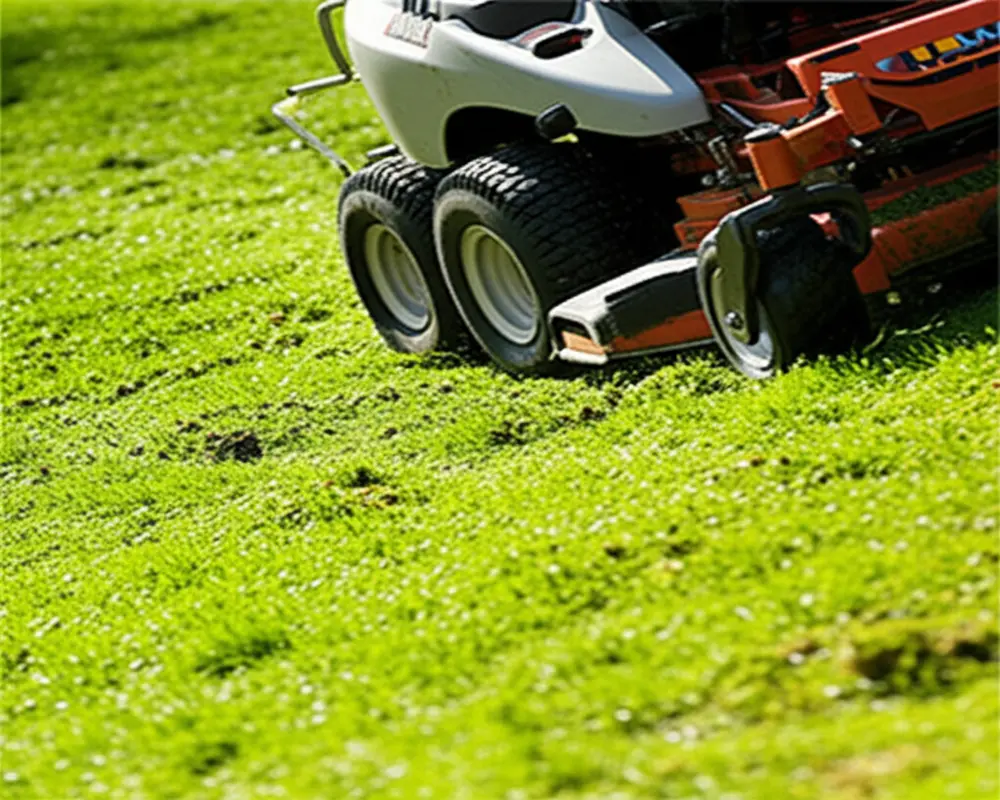
Types of Lawn Mowers Best Suited for Steep Hills
Choosing the right type of mower depends heavily on the slope’s steepness, size of the yard, and your ability to operate the equipment safely.
Self-Propelled Walk-Behind Mowers
Best suited for moderate slopes and medium-sized yards, these mowers combine power and precise control. Equipped with self-propulsion, they ease maneuverability uphill. Key features include AWD or RWD systems, high-torque engines, and enhanced traction tires. While accessible for many, these mowers require attentive operation on slopes.
Riding Lawn Mowers
Riding mowers are ideal for extensive properties with varied terrain. Specifically, ride-on mowers designed for hills come with stability-focused features such as AWD, robust braking systems, and low centers of gravity. These machines relieve physical strain but demand caution due to rollover risks. Some models are tailored for steep gradients, providing the necessary power and control.
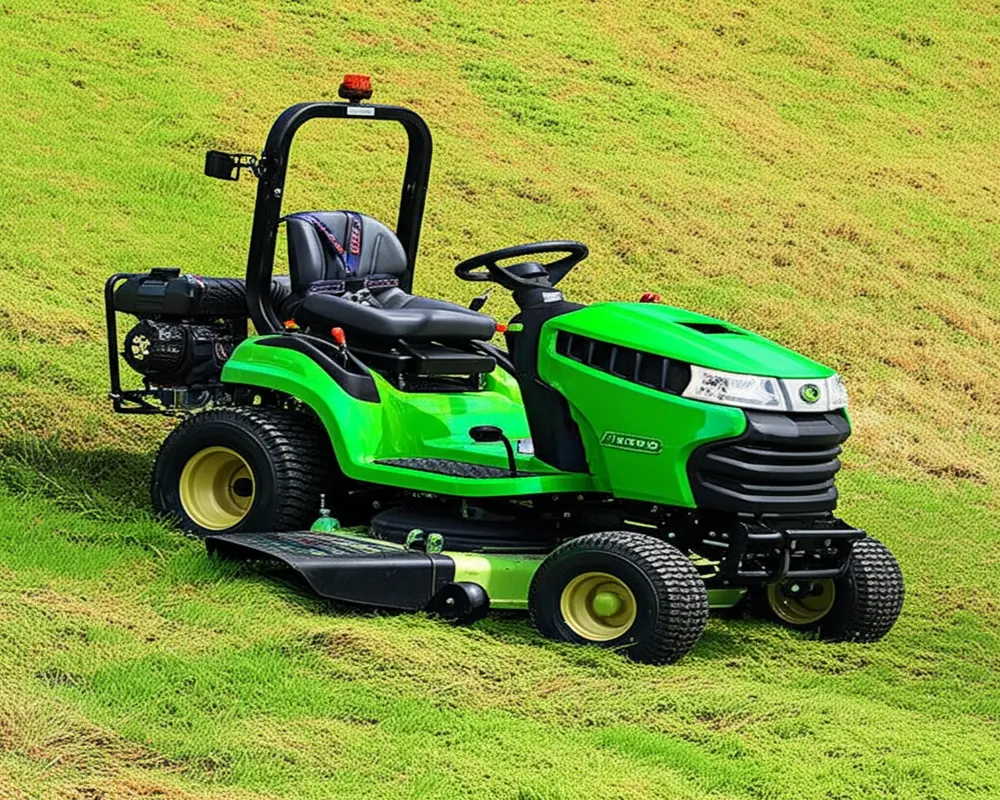
Robotic Lawn Mowers
For those seeking consistent maintenance on slopes, robotic mowers offer automated convenience. They manage gentle to moderate slopes well and reduce human exposure to tricky terrains. However, their limitations arise in uneven, extremely steep, or obstacle-heavy hills where manual intervention becomes necessary.
Remote-Controlled or Brush Mowers
On extremely steep or hard-to-reach slopes, remote-controlled mowers or brush cutters specialized for rough terrain come into play. They minimize operator risk but come with higher costs and require user familiarity with remote operation. Their utility shines in inaccessible areas where traditional mowing is unsafe or impractical.
Top Recommended Lawn Mowers for Steep Hills in 2025
Several models stand out this year for their balance of safety, power, and hill-handling capabilities. We classify them by mower type to match your terrain and needs:
| Model | Drive Type | Engine Power (HP) | Max Incline | Cutting Width (in/cm) | Price Range (USD) |
|---|---|---|---|---|---|
| Honda HRX217VKA | RWD Self-Propelled | 6.75 | 15° (27%) | 21 in (53 cm) | $900 – $1,000 |
| Husqvarna MZ61 | AWD Riding | 27 | 20° (36%) | 61 in (155 cm) | $4,500 – $5,000 |
| Segway Navimow | Robotic AWD | N/A (Electric) | 15° (27%) | 9.84 in (25 cm) | $1,800 – $2,200 |
| DR Power RMK42 | Remote-Controlled Brush | 12 | 45° (100%) | 17 in (43 cm) | $4,000 – $5,000 |
Crucial Safety Guidelines for Mowing on Slopes
Mowing on inclines increases the danger of slips, rollovers, and injuries, calling for rigorous safety practices. Here are essential guidelines:
- Pre-mowing checks: Examine mower condition, tire pressure, and brake functionality.
- Operational techniques: For walk-behind mowers, push uphill rather than downhill to maintain control and avoid falls. Riding mowers should be driven up and down slopes, not across.
- Rollover risk mitigation: Use machines with rollover protection systems (ROPS) where possible and always wear seat belts.
- Avoid wet, slippery, or uneven surfaces: These conditions drastically reduce traction and stability.
- Operator awareness: Limit distractions, maintain clear sightlines, and never mow while fatigued or under influence.

Choosing the Right Mower for YOUR Specific Hill: A Decision-Making Guide
Selecting the ideal steep hill lawn mower stems from careful evaluation of:
Your hill’s grade, size, and obstacles determine feasible mower types. A smaller, moderate slope may be managed with a walk-behind self-propelled mower, while large or exceptionally steep land could require a specialized riding mower or remote-controlled option. Consider the frequency of mowing and terrain complexity as well.
Operator skill and physical ability matter greatly; some mowers demand higher maneuverability expertise. Budget considerations balance cost versus safety and efficiency, and storage space might limit mower size choices.
Follow these steps:
- Measure your hill’s grade accurately.
- Evaluate yard size and reachable patterns.
- Identify presence of obstacles or tricky ground.
- Assess your physical capacity and comfort with mower operation.
- Match these findings with mower types and safety features.
In-depth mower comparisons like those on The Family Handyman can further guide your choice.
Maintenance Tips for Mowers Used on Hilly Terrain
Steep hill mowing exerts more strain on machines. Proper upkeep ensures longevity and safety:
- Regularly check and change engine oil and other fluids.
- Maintain correct tire pressure optimized for turf traction.
- Keep blades sharp and balanced to ensure clean cuts and reduce vibration.
- Clean air filters and monitor cooling systems to prevent overheating.
- Thoroughly clean the mower post-mowing to avoid rust and blade corrosion; incorporating rust prevention tips can be helpful as detailed in our garden fork rust prevention guide.
When to Consider Professional Lawn Care Services for Extreme Slopes
For hills beyond safe mowing inclines or where terrain complexity heightens risk, professional lawn care services are advisable. Experts equipped with specialized heavy-duty machinery and training can ensure proper landscape maintenance while mitigating accident risks. This option provides peace of mind where DIY methods pose dangers.
Conclusion: Mow Safely, Mow Smartly
Tackling steep hills demands the right combination of an appropriate mower, understanding terrain specifics, and adhering to rigorous safety practices. Whether choosing an AWD walk-behind mower, a ride-on designed for slopes, or a remote-controlled model, prioritize features that promote stability and control. By investing time in selecting the perfect mower and maintaining it properly, while keeping safety as your foremost priority, you can keep your slope looking great without compromising your well-being.
Frequently Asked Questions (FAQs)
Can a regular riding mower be used on steep hills?
Standard riding mowers generally lack the stability features required for steep slopes and pose a higher rollover risk. It is safer to use models with AWD and built-in safety mechanisms designed for hills.
What is the maximum incline for self-propelled mowers?
Most self-propelled walk-behind mowers safely operate up to about 15 degrees (27%). Models with AWD may handle slightly steeper grades, but exceeding manufacturer guidelines is risky.
Are zero-turn mowers suitable for slopes?
Zero-turn mowers excel on flat or gently rolling lawns but are not recommended for steep or uneven slopes due to their high center of gravity and reduced traction.
How to measure hill grade?
Hill grade can be measured using an inclinometer or smartphone app, typically reported in degrees or percent slope. Knowing this assists in selecting suitable equipment and safe mowing practices.
Is pushing uphill or pulling uphill safer for walk-behind mowers?
Pushing uphill is safer as it provides better control and reduces the risk of falling or the mower running away downhill.
What safety gear is recommended for mowing on slopes?
Wear sturdy, slip-resistant footwear, eye protection, hearing protection, and gloves. Using a safety helmet is advisable when operating heavy ride-on mowers on steep terrain.
Additional in-depth safety and equipment insights can be found on Bob Vila’s guide to mowing on slopes.

